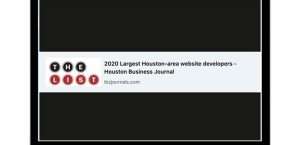Building an operational system that works !!!
An operational system is a term used in data warehousing to refer to a system that is used to process the day-to-day transactions of an organization. These systems are designed in a manner that processing day-to-day transactions are performed efficiently and the integrity of the transactional data is preserved.
Building a custom solution for your operational system can get complicated and confusing as you move from initiation to completion.
While you will need the right skill set and the right people to build and manage the system, it is crucial that a subject matter expert is involved in the overall development process.
Following are some areas that need to be given keen attention to :
Discovery
- Business Goals & Challenges: Identifying business goals and challenges.
- Business Overview: Understand the Business Process and Identify key stakeholders
- Day to Day Activities: Document daily activities/transactions performed in the business. A clear understanding of the current process and tools utilized.
- Current System: Clear understanding of all functions, features, and issues in the existing system and the end users of the system.
- Document
- Target Audience
- What works?
- What does not work?
- What’s missing?
- Create a Backlog of items that need to be built in the new system
- Discuss each item in detail and document the requirements
Wireframe
Develop wireframes to support your documentation and review every screen with the stakeholders to demonstrate the flow of the system.
When developing wireframes it’s important to understand your end users. It always a good practice to develop your wireframes to support both novice and advanced users as that won’t frustrate any of them. Novice users can follow the step by step approach while advanced users can use the advanced features to skip through the step by step approach.
Test Wireframes
Once you have developed the wireframes then the next step would be to test them to make sure that users find it intuitive and not confusing.
One of the ways to test the wireframes is to create a list of tasks and have your users tell you how would they complete the task by following the wireframes.
Record the steps and if you find that most users are able to complete the tasks in the first go then its more likely that you are on the right path. However, if the users are unable to complete the task then there seems to be a need to revisit the wireframes and make necessary changes.
UI Design
On successful development, testing, and revising the wireframes. You are now at a safer place to start on the UI Design. Designers would then do their magic to bring life to the wireframes to demonstrate the final look and feel of your product.
Development
At this point, it’s recommended that you follow the plan and design and avoid major changes to the application. While there should always be room to make modifications. However, adding major functionality and modules would deviate from the original project scope, schedule, and cost.
It’s always recommended to identify and plan the major modules in releases instead of trying to accommodate the new ideas in the initial release. As this gives enough time to analyze the effect and impact of adding new features/modules to the current scope.
Testing
While there are several automated and ad-hoc testing mechanisms available, its recommended to have a team of beta testers who are a subset of your target audience as that would give you enough information on how your end users would use the system. This is a good practice to do at the wireframe level as well.
Post Production
There are several ways to monitor your application post-production. It’s recommended you have a monitoring system on your server to notify the uptime and performance statistics.
You can also setup configure 3rd party plugins to monitor how your website is used by the end users and providing an option for your end users to easily report a bug or option to provide feedback is recommended as that gives you the opportunity to fix any issues or usability concerns that can be addressed quickly
Filter by Category:
- Construction
- Corporate Business
- DevOps
- Digital Marketing
- E-commerce
- Enterprise CMS
- Environmental Services
- Government
- Graphics Design
- Healthcare
- Hospitality
- Industrial
- IoT
- Logistics
- Manufacturing & Engineering
- Medical
- Mobile Apps
- Mobile Apps
- News
- Oil and Gas
- Portal / SharePoint
- Residential & Commercial Energy Services
- Retirement Plan Advisory & Third-Party Administration(TPA)
- SaaS Portal
- SEO Optimization
- Service
- Transportation
- Uncategorized
- Web Development
- Work









